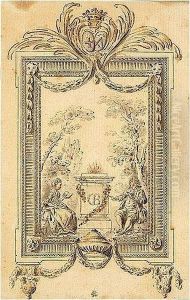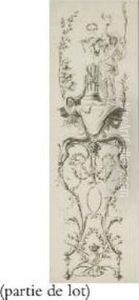Francois Queverdo Paintings
François-Marie Queverdo was a French engraver and draughtsman born in 1748 in Brest, France, and died in 1797. His work is emblematic of the artistic movements and societal shifts occurring in France during the late 18th century, a period marked by the Enlightenment and the years leading up to the French Revolution. Queverdo's artistry developed during a time when France was a hub of intellectual and artistic progress, and his engravings reflect the complex interplay between art, politics, and social change.
Queverdo trained under the renowned engraver Jacques-Philippe Le Bas, a connection that deeply influenced his artistic development and introduced him to the Parisian art world. Through this mentorship, Queverdo honed his skills in the intricate art of engraving, which involves etching designs onto metal plates to produce prints. His body of work is characterized by detailed and expressive engravings that often depicted scenes of daily life, portraits, and illustrations for books, showcasing his versatility and keen eye for detail.
Throughout his career, Queverdo collaborated with several prominent artists and intellectuals of his time, contributing illustrations to literary and scientific publications. This collaborative work highlights the interdisciplinary nature of the Enlightenment, where art and science were deeply intertwined. Queverdo's engravings not only served as artistic expressions but also as vehicles for disseminating the ideas and discoveries of the era.
Despite his contributions to the art world, Queverdo's work has not received the same level of recognition as some of his contemporaries. However, his engravings remain valuable artifacts of the 18th century, offering insights into the cultural, social, and intellectual currents of pre-revolutionary France. Queverdo's legacy is preserved in various collections and museums, where his engravings continue to be studied and appreciated for their historical significance and artistic merit.
François-Marie Queverdo's life and work encapsulate the spirit of an era that was on the cusp of profound change. Through his engravings, he captured the complexities of his time, leaving behind a body of work that continues to engage and inspire. His death in 1797 marked the end of a career that, while perhaps not as celebrated as some, was undeniably impactful in the context of French art and the broader narrative of the Enlightenment.

